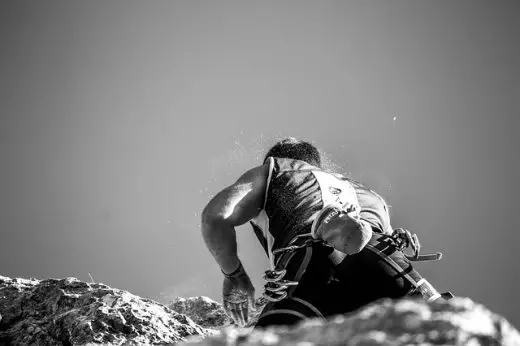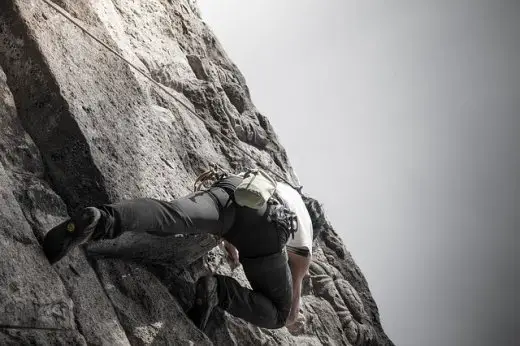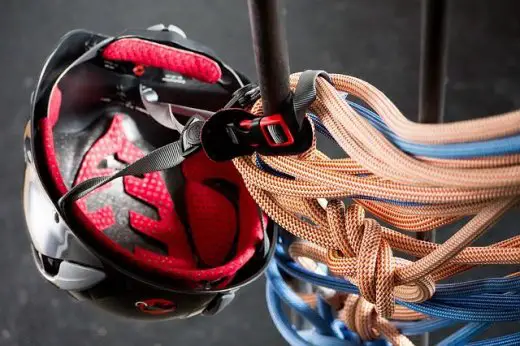
At 7,625 feet, Emory Peak is one of the most beautiful destination peaks in the US. Located in Big Bend National Park, the Emory Peak Trail is a moderate to strenuous hiking trail capped off with a 25-foot scramble to reach the summit for a full 360-degree view.
The Emory Peak Rock Scramble may be one of the most challenging scrambles; however, the reward is a fantastic view that everyone who has conquered the scramble agrees is well worth it.
So, how difficult is the Emory Peak Rock Scramble? You may be looking for a simple answer. Unfortunately, there isn’t one. The difficulty level of the Emory Peak Rock Scramble is a matter of opinion, and grade levels are not an exact science.
I’ll explain a bit more in the following article.
What is a Rock Scramble?
Somewhere in between rock climbing and a good hike lies the rock scramble. Scrambling requires most of the same skills as a rock climber and the endurance of a hiker. Some scrambles may involve the use of a climbing rope in some sections, while other scrambles are done without any ropes.
As no two scrambles are the same, you will often hear scrambles referred to in grades. This grading system is similar to ones used for rock climbing, though there are some differences. Check out each of the grades to understand them a little better.
Grade 1
This is the simplest type of scramble. Most may refer to this as a more challenging hike and not even consider it a scramble. Consider a grade 1 scramble a steep and enduring hike where you will have to use your hands quite a bit. Most grade 1 scrambles will not require a rope for most experienced scramblers.
Grade 2
The next step in grade usually includes not only more challenging terrain but a longer scramble distance as well. A grade 2 scramble may be broken up into several sections, some that have more challenging areas that may require the use of a rope to scramble safely.
Grade 3
A grade 3 scramble is much closer to rock climbing. We would not suggest a grade 3 scramble for anyone without adequate rock climbing experience. These scrambles usually require safety rope on most or all of the terrain. Another aspect of a grade 3 scramble is the descent is likely as difficult as the ascent.
Grade 4
The hardest of difficult scrambles are labeled grade 4. These scrambles should only be attempted by very experienced rock climbers or scramblers. These routes often challenge endurance and strength over various passages. Grade 4 scrambles are usually extremely difficult to escape from, as well. Only the most experienced scramblers should even attempt a grade 4 scramble.
What grade is Emory Peak?
The Emory Peak Rock Scramble is a Grade 3 Scramble**
**Please note that this is not an official grade designation.
This article is owned by Recapture Nature and was first published on October 18, 2019
The Emory Peak Trail
The Emory Peak Trail is a well-traveled trail. This trail is an in/out trail of 8.5 miles round trip and reaches an elevation gain of 2,401 feet. The last 25 feet is the location of the Emory Peak Rock Scramble to reach the summit. On a good, clear day, you may be able to see up to 100 miles and can experience the full panoramic view.
The trip back down the Emery Peak Scramble is not as bad as the ascent, mostly due to the short distance. However, less experienced scramblers should be cautious.
Attempting the Emory Peak Rock Scramble

Before any rock scramble, you want to take the time to survey as much of the terrain as you can see. Take note of any areas that may require the use of your equipment and areas to try to avoid.
The Emory Peak Rock Scramble does not have many areas where the path has been worn well enough to find the easiest track. This means that you may or may not be traveling where others have gone.
There are also a few spots up to the peak that if you lose your footing, it could result in serious injury or even death, depending on how you fall. This is not a simple scramble and takes time and patience to ascend and descend.
This article is owned by Recapture Nature and was first published on October 18, 2019
Tips for Safe Scrambling

- Stay balanced – Keep your weight balanced between your feet and handholds. While you will likely carry the majority of your weight on your feet, do not forget the importance of balancing the strength on your hands as well. Keeping your reach closer will help you remain more balanced.
- Move slowly – Never rush through a scramble. Carefully test all holds before committing to them. Giving a tug on a handhold or kicking at a foothold will let you know if it is secure.
- Concentrate – Avoid distractions and stay focused on your movements. It only takes a microsecond to make a devastating mistake when scrambling. Avoid attempting a rock scramble when you are distracted or not feeling well.
- Pack correctly – Only carry what you need to and balance your load. Packing correctly can make a significant difference in the difficulty of a scramble. Remember to always pack heavier items toward the bottom of your pack (near your center of gravity). This helps you remain closer to your regular balance levels and steadier on your feet. (The Emory Peak Rock Scramble is short enough you may want to leave your pack at the base)
- Be patient – with yourself and others. You are going to encounter other people on a scramble as popular as Emory Peak. Remember that not everyone is in the same health and condition. If someone is in your path and taking a break, take one too. Hurrying will only lead to frustration, or worse.
How to Be A Better Scrambler

Whether you are new to scrambling or have plenty of experience, we all have room for improvement. Here are a few things that will help you increase your scrambling skills and make your adventures more enjoyable and safer.
- Navigation Skills – not all scrambles are as short as the Emory Peak Rock scramble. Just like long hikes, many scrambles can cover miles. Knowing how to travel without the help of your GPS or Google maps is an important skill for any real scrambler.
- Mountaineering – unlike rock climbing and hiking, mountaineering involves more on the spot ingenuity and being able to make immediate decisions based on the surroundings. Advanced scramblers combine the skills of rock climbing, hiking, and mountaineering.
- Survival skills – as scrambling trails become more and more known, you may find yourself in some interesting situations. Hopefully, you never need them, but having at least some basic survival skills could mean the difference for you or a companion.
- Equipment – There are tons of specialized equipment that you could go out and spend hundreds or thousands of dollars on. However, the most important are good shoes, proper clothing, portable food, and water purifier. Other equipment may be a luxury.
- Safety Practice – Know the ten essentials to adventure travel. Know them, learn them, perfect them!
- Illumination
- Navigation
- Repair
- Sun Protection
- Nutrition
- Insulation
- Hydration
- First Aid
- Fire
- Emergency Shelter
Final Thoughts
Attempting the Rock Scramble at Emory Peak may not be for everyone; it is not an easy scramble. Many individuals have reached the base of the scramble and decided against climbing.
The views at the peak are definitely worth the scramble; however, it should only be attempted by someone with at least some scrambling or rock climbing experience.
You should also avoid the scramble on days when the weather is not being cooperative. The scramble includes several areas where the rocks are quite jagged, and even a small slip can be extremely dangerous.
Finally, we hope you have found this article helpful.
This article is owned by Recapture Nature and was first published on October 18, 2019
If you decide to attempt the Emory Peak Rock Scramble, we hope you will make sure to keep you and your party safe. Take plenty of pictures and remember to be as careful coming down as you are on the way up! Have fun and be safe!

